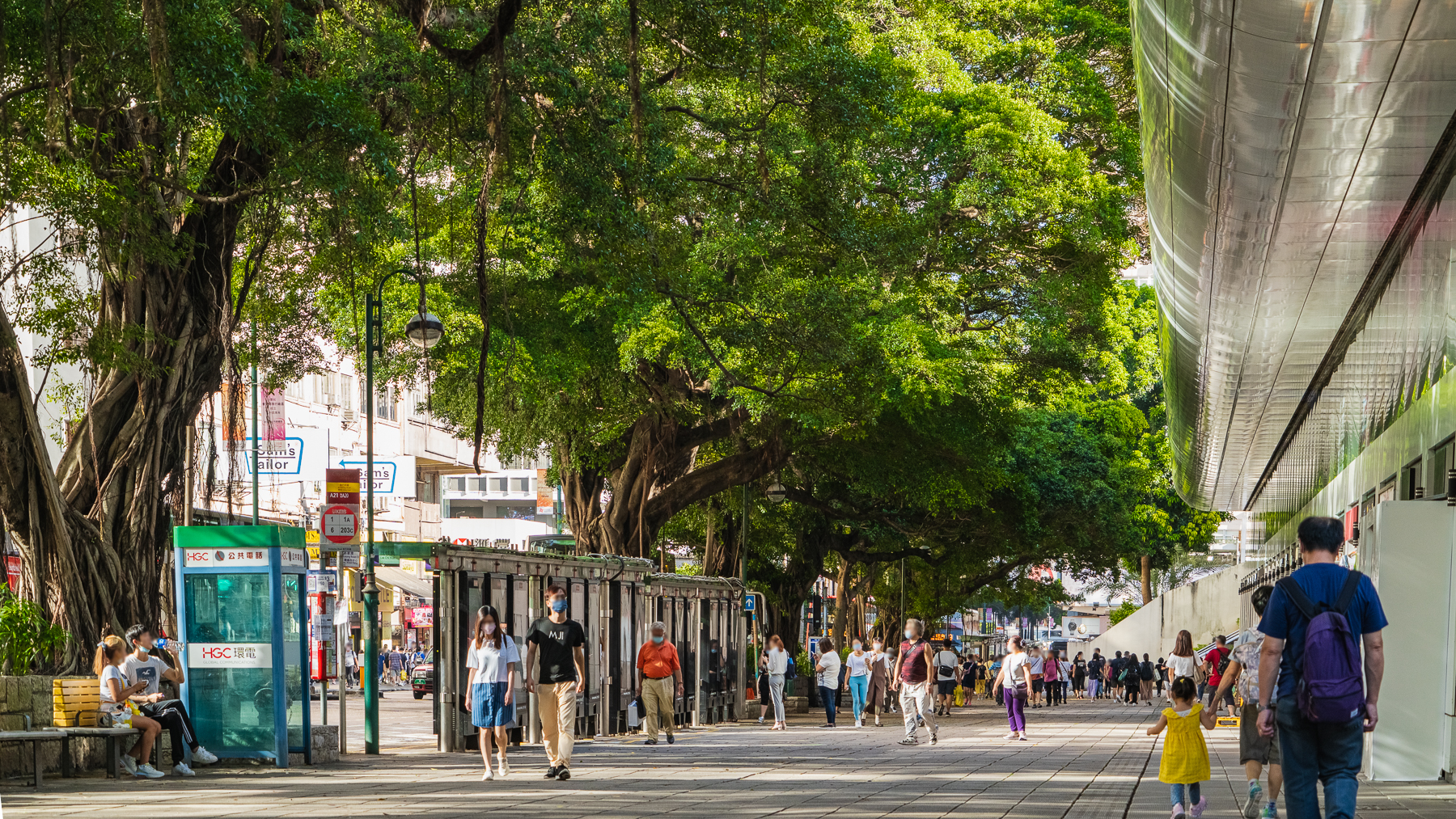

Haiphong Road, one of the few roads in Hong Kong not named after an English or Chinese subject, and Nathan Road, was the first two roads built in Tsim Sha Tsui in the 1860s. Home to the Whitfield Barracks, the early Nathan Road was mainly of residential flats, with colonial-style houses with arcades. Since the 1920s, Indian merchants began establishing shops on the streets, selling Indian goods to soldiers in the adjacent Whitfield Barracks. Nowadays it is lined with an avenue of trees, numerous shops and restaurants with overwhelming decorative neon signs hanging above the busy road, creating the iconic representation of Hong Kong in movies, popular amongst tourists from different parts of the world.
Cinnamomum camphora, commonly known as Camphor tree, is an evergreen tree often grown as windbreakers. The wood is highly rot-resistant with a unique fresh minty smell that naturally drives away insects, making it popular in furniture and sculpture productions. Camphor oil extracted from the tree also has a strong fragrance and feels cool when applied on skin, where it can be used to treat from itching to inflammations and toothaches. Camphor trees can live to a thousand years, therefore are commonly found in “Feng Shui” Woods.
Celtis sinensis, otherwise known as Chinese Hackberry, is a deciduous tree originating from Hong Kong, often used as shade trees at parks and countryside. The tree comprises of an upright tree form with extensive foliage, where small clusters of yellowish green flowers bloom just before the young leaves unfold. Small conspicuous fruits sprouting from green, orange-red to black colour are popular amongst birds for food, whereas the rigid wood is commonly used for furniture-making and cutting boards.
Ficus microcarpa, also known as Chinese Banyan, is a large evergreen urban tree commonly found in Hong Kong. This tough, fast-growing and long living tree can be seen along roadside as well as suburban areas across the city. Remarkable long strands of aerial roots hanging down from the huge umbrella-shaped tree crown functions as anchors to stabilise the tree and absorb more nutrients, whereas its vigorous tree roots are often seen crawling all over cracks and grouts of the planters. The extensive tree foliage provides ample shade for users and their fruits offers valuable food source for birds within the city.